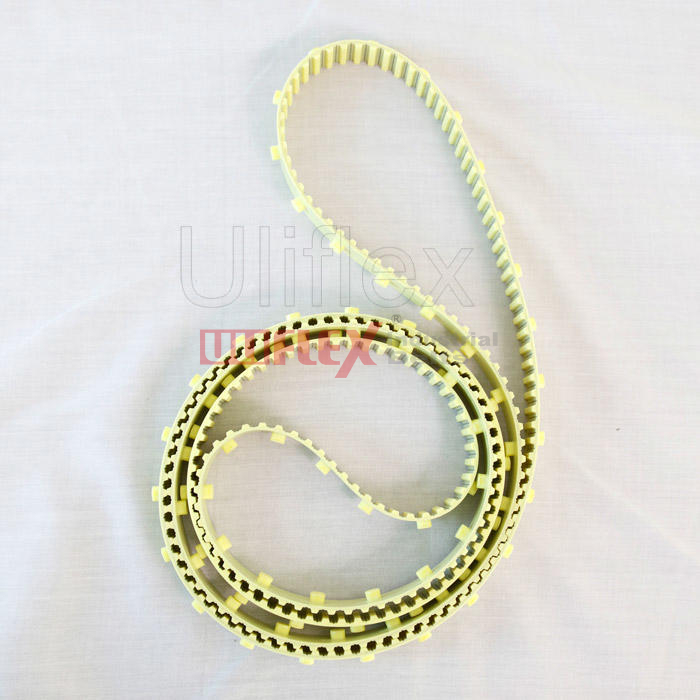Views: 0 Author: Site Editor Publish Time: 2023-08-18 Origin: Site









Timing belts play a crucial role in the proper functioning of various mechanical systems, including engines, conveyor systems, and manufacturing equipment. Choosing the right timing belt is essential to ensure optimal performance, reliability, and longevity of these systems. With a wide range of options available in the market, it can be overwhelming to select the most suitable timing belt for your specific application. In this article, we will discuss the key factors to consider when choosing timing belts, enabling you to make an informed decision.
Before delving into the selection process, it is important to have a basic understanding of timing belts. Timing belts are toothed belts made from rubber or synthetic materials, designed to synchronize the rotation of the crankshaft and camshaft in an engine. They prevent the valves from colliding with the pistons, ensuring precise timing and efficient combustion. Timing belts are available in various sizes, tooth profiles, and materials, each catering to specific applications.
The first step in choosing the right timing belt is to identify the specific application requirements. Consider the power transmission requirements, speed, torque, and environmental conditions. Different applications may demand different tooth profiles, materials, and reinforcements. For example, high torque applications may require timing belts with steel reinforcements, while applications in extreme temperatures may require belts with special heat-resistant materials.
Timing belts come in various tooth profiles, including trapezoidal, curvilinear, and round. The tooth profile determines the engagement between the belt and the pulley, ensuring accurate power transmission. Trapezoidal tooth profiles, such as the commonly used T and HT profiles, offer excellent grip and are suitable for most applications. Curvilinear and round tooth profiles are often used in applications requiring high precision and smooth operation.
The choice of timing belt material is crucial to ensure durability and resistance to wear and tear. PU timing belts are commonly used due to their excellent flexibility and resistance to oil and heat. However, for applications with high temperatures, chemical exposure, or abrasive environments, synthetic materials like rubber or neoprene are preferred. These materials offer enhanced resistance to chemicals, abrasion, and temperature fluctuations, ensuring a longer service life.
Determining the correct belt length and width is essential for proper installation and efficient power transmission. Measure the distance between the pulleys accurately to determine the required belt length. It is advisable to consult the manufacturer's guidelines or use online calculators to ensure accurate measurements. Additionally, consider the width of the belt to ensure it fits the pulley properly, allowing for optimal power transfer.
Consider the maintenance requirements and expected service life of the timing belt. Some applications might require regular inspections, lubrication, or belt replacements at specific intervals. Additionally, inquire about the manufacturer's recommended service life to ensure the longevity of your system. Choosing a timing belt with a longer service life can help minimize downtime and reduce maintenance costs.
Selecting the right timing belt for your application is crucial for achieving optimal performance and reliability. By considering the factors discussed above, including application requirements, tooth profile, material selection, belt length and width, as well as maintenance needs, you can make an informed decision. Remember, it is essential to consult with experts or manufacturers when in doubt, as they can provide valuable guidance based on their expertise. Investing time in selecting the appropriate timing belt will pay off in the long run, ensuring smooth operations and avoiding costly breakdowns.
We are going to have the EXHIBITION with The 19th International Exhibition on Textile Industry(ShanghaiTex 2019) this coming 25th-28th November 2019 which located in the Shanghai New International Expo Centre .You are always welcome to visit us at our booth No.D32, Hall No. E3, any time because we
Timing belts play a crucial role in the proper functioning of various mechanical systems, including engines, conveyor systems, and manufacturing equipment. Choosing the right timing belt is essential to ensure optimal performance, reliability, and longevity of these systems. With a wide range of options available in the market, it can be overwhelming to select the most suitable timing belt for your specific application. In this article, we will discuss the key factors to consider when choosing timing belts, enabling you to make an informed decision.
ULIFLEX company is a professional manufacture for industrial belts and equipment. It has cooperated with foreign companies to develop products which are widely used in the mechanical transmission of ceramic, glass, textile, food,automobile, tobacco, medicine and so on. We always believe that creativ
Professional Industry Belt Manufacturer
